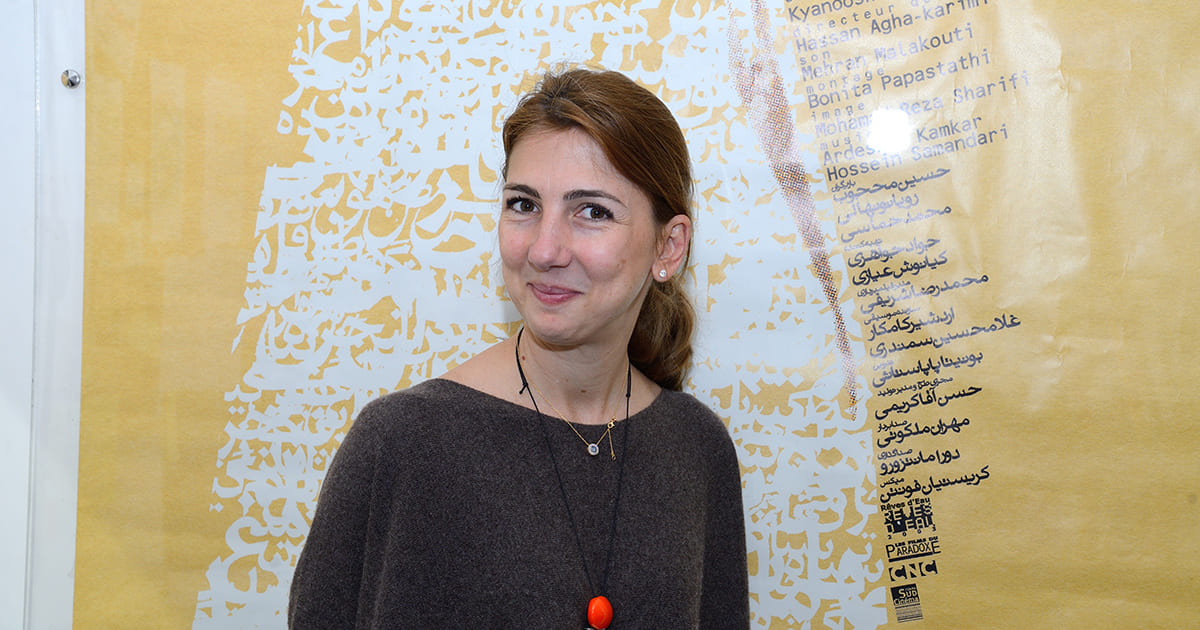Dr. Yasmine Nachabe Taan on Arab Design Education
A longtime champion of marginalized Arab artists, Dr. Taan sheds light on the imperative role they can play in constructing new narratives for design history in the region.
While design history is well-established in the West, the Arab region lacks a collective understanding of the social, anthropological, psychological and social contexts that influenced Arab art and design. As a design historian and curator, LAU Associate Professor and Director of the Institute of Art in the Arab World (IAAW) Yasmine Nachabe Taan (BA ’92) found her calling in attempting to set this right.
For more than a decade, she has examined, researched and unearthed the work of lesser-known and marginalized designers and artists from the region to construct a narrative that reflects the varying contexts in which their art was created and the interdisciplinary approaches they often used. A prominent example is her work on pioneering abstract artist and LAU alumna Saloua Raouda Choucair (AA ’38).
In January, Dr. Taan’s paper, On Being Simultaneously Arab and “Modern”: Saloua Raouda Choucair’s Design Between Science and Sufism, was published in the Journal of Design History. Last spring, her book, Saloua Raouda Choucair, was launched at a special ceremony dedicated to celebrating Choucair’s legacy as part of LAU’s centennial year events. Dr. Taan is an elected member of the executive committee of the Design History Society, which promotes and supports the study of design history.
In the following interview, Dr. Taan expounds on Choucair’s legacy as a designer, not only as an artist, and the valuable lessons and inspiration students can draw from her as well as other Arab design figures.
What first sparked your interest in Saloua Raouda Choucair’s work and how did your understanding of her work evolve?
My first encounter with Choucair’s work was right here at LAU, when I was a student. My fine arts teacher, Mehranguise Irani, introduced us to Choucair’s sculptures and invited her to class to speak about her work.
It was only years later, when I visited her daughter Hala Schoukair and eventually delved into her work, that I realized that Choucair was not only a pioneer of abstract Arab art but also a designer. Schoukair showed me dresses, jewelry, furniture, book covers, lamps and carpets that her mother had designed, and I came to understand that she had done so out of a need for functional objects. This is why I believe that Choucair’s work fits under the definition of design that focuses on practicality.
But she did not stop at creating practical household items or fashion. Choucair first conceived these design plans and prototypes—in the thousands—through rough sketches. She spent hours in her workshop designing and refining varied objects, ranging from electric, hand-held heaters to fountains for public spaces in Beirut. These are all a valuable part of Choucair’s legacy that we cannot limit to abstract art pieces.
Why is it important to nurture curiosity among students for Arab art?
In the Arab world, we have yet to learn more about our history, identity and heritage, especially as the Western media narratives position Arabs as people who are downtrodden or terrorists.
Studying the history of Arab design serves to challenge these stereotypes. Students should be made aware of their identity, especially as most of them come to university having been taught under British or French curricula and learned to appreciate Western cultures more than their own.
When I first began looking into the work of Arab artists, I was often told that there were no designers in the Arab world, especially women, but I refused to believe it. A review of the history of graphic design will reveal several designers who were producing work in the 1950s, 1960s and 1970s. They produced printing models and worked in the printing press as calligraphers, publishers, typographers and layout designers. So, there is no doubt that they existed. We just need to investigate the archives to uncover their work, which has been largely neglected or overlooked.
When art educators introduce a pioneering figure in class, especially female figures, they give students the rare opportunity to take pride in their culture, appreciating designs and pieces that had previously gone unnoticed. Exposing the students to these designers inspires them and eventually feeds into their own design practices.
How has Choucair’s design philosophy influenced your view of design education? What are some of the ideas that can be applied in your work as the director of IAAW?
Choucair not only created art, but she also wrote about her ideas and art education. She believed that she could embody her Arab heritage in her work and refused to be compared to other abstract artists in Europe.
Similarly, we need to redefine art and design within our cultural context instead of adopting Western definitions. This allows us to gain a deeper understanding of craftsmanship, particularly by examining materials that are integral to our Arab heritage, such as copper, weaving, and embroidery. By recognizing these multidisciplinary crafts collectively, we can develop a new definition of design that honors our cultural traditions.
I believe that our communities lack a shared history. For example, the Lebanese Civil War remains a neglected subject as the country has yet to develop a formal, united narrative around it.
We need to talk about these conflicts in the region, and design can help us make sense of what we had collectively experienced in the past, specifically through print media.
That is why the institute is focused on bringing marginalized designers to the fore, especially female artists and art educators, who were overshadowed by their husbands and male family members. We plan to dig into undiscovered art and conduct primary research about their work to better understand them.
This interview has been edited and condensed for the sake of clarity.
To browse more scholarly output by the LAU community, visit our open-access digital archive, the Lebanese American University Repository (LAUR)
